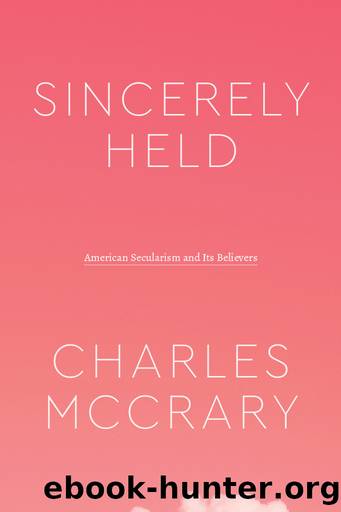Sincerely Held by Charles McCrary

Author:Charles McCrary [McCrary, Charles]
Language: eng
Format: epub
Tags: LAW000000 Law / General, LAW060000 Law / Legal History, REL084000 Religion / Religion, Politics & State, LAW018000 Law / Constitutional
Publisher: University of Chicago Press
Published: 2022-04-08T00:00:00+00:00
âGroups as Yet Unimaginedâ
While MOVE people insisted that they had a religion, advocates marched for their human rights, and the City of Philadelphia put up a blockade, academics and judges kept outlining the religious and finding its others. But they werenât the only ones. Debates about good and bad religion and their place in public life captured public attention and filled newspaper and magazine pages. Many Americans were obsessed with âcults,â especially after the deaths of over nine hundred people at Jonestown, Guyana. âFundamentalism,â another of good religionâs others, was supposedly on the rise, from the religious right in the United States to the Ayatollah Khomeiniâs âunthinkableâ ascent in Iran.18 These tropes were close at hand as interested parties debated the scope of the religious clauses and the nature of religious freedom.
In the years since Seeger and Welsh had used the sincerity test to stretch the religious as far as it could go, perhaps to the point of ripping, many legal scholars had tried to ease the tension and mend the tears. Religion, they cautioned, needed some definitional edges lest it be overextended beyond a reasonable frame. These concerns were not brand new. Immediately following Seeger, some worried about the implications of such an expansive understanding. One legal scholar wrote in 1966, âWhen this forbearance toward religious objection is combined with the new permissiveness in defining religion, other kinds of possibilities come into view. Dissidents of all kindsânudists, LSD users, racists, utopians, and groups as yet unimaginedâcan be expected to present claims for religious freedom.â19 By the late 1970s those yet-unimagined groups had been realized. In this context, in the sober morning light, a growing number of legal thinkers saw a need for new, clear definitions of religion. One such thinkerâwhose thoughts led to rulings with consequencesâwas Judge Arlin Adams, who wrote the Third Circuit opinion ruling against Frank Africa.
Adams intervened in a number of ongoing debates with his 1979 opinion in Malnak v. Yogi, from which he would draw directly in Africa. The main issue, if it could be boiled down to one question, was this: How broad should the âreligiousâ be? Or, framed differently: If Seeger and Welsh went too far, how far should we go? One proposed answerâreally, a dodge and a new question more than an answerâwas that âreligionâ had two meanings: one for the establishment clause and one for the free exercise. The excesses of the Tillichian moment largely served free exercise jurisprudence. Applying those same standards to the establishment clause could create impossible situations, where any foundational âultimate concernâ could not be funded by the government. Avoiding these implications, another solution was to assert that the law could instead recognize that the âreligionâ whose free exercise was protected was not exactly the same âreligionâ that could not be established. In his influential 1978 work, American Constitutional Law, Laurence Tribe argued for such a dual modelââexpansive for the free exercise clause, less so for the establishment clause.â20 Although Tribeâs position remained a minority view (and he later revised it), it did spark further debates about a constitutional definition of religion.
Download
This site does not store any files on its server. We only index and link to content provided by other sites. Please contact the content providers to delete copyright contents if any and email us, we'll remove relevant links or contents immediately.
2010-The City & the City by China Miéville(1958)
Anatomy of Injustice by Raymond Bonner(1635)
That Every Man Be Armed by Stephen P. Halbrook(1556)
ADHD on Trial by Michael Gordon(1548)
Injustices by Ian Millhiser(1475)
You Don't Own Me by Orly Lobel(1418)
Tell by Major Margaret Witt(1406)
Course Correction by Ginny Gilder(1383)
Broken Scales by Joel Cohen(1330)
Without Copyrights by Spoo Robert(1322)
A Vast Conspiracy by Jeffrey Toobin(1308)
First by Evan Thomas(1258)
A Religious Orgy in Tennessee by H.L. Mencken(1232)
J by Howard Jacobson(1228)
The Run of His Life: The People v. O. J. Simpson by Jeffrey Toobin(1186)
A Triumph of Genius: Edwin Land, Polaroid, and the Kodak Patent War by Ronald K. Fierstein(1184)
A History Of Thailand by Baker Chris(1158)
John Wayne Gacy by Judge Sam Amirante(1084)
Law 101: Everything You Need to Know About American Law, Fourth Edition by Jay Feinman(1072)
